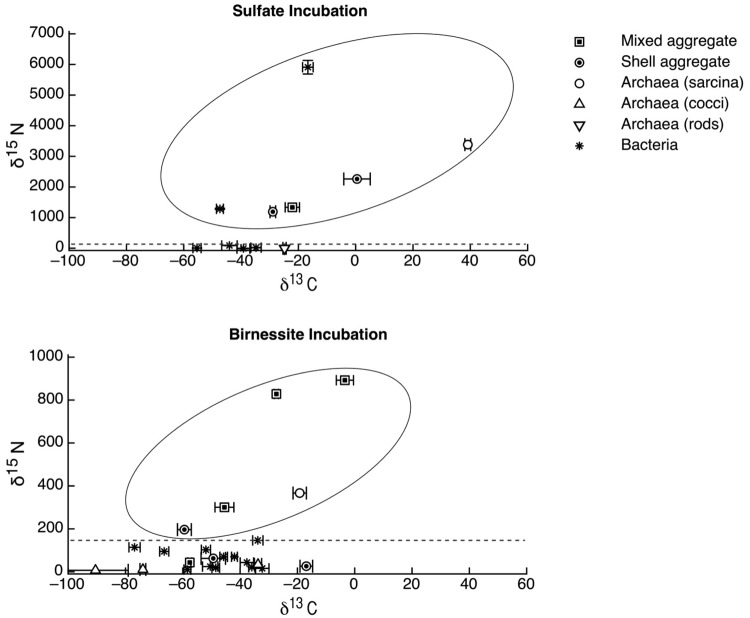Figure 3.
Carbon and nitrogen isotopic compositions of targeted aggregates. Aggregates classification scheme based on description in text as well as indicated in Figure 2 and Figure 3. Dashed line shows the approximate maximum 15N values observed in the non-active control incubation (∼150‰). The top panel shows aggregates from the sulfate control. The bottom panel shows aggregates from the manganese incubation. Shell aggregates are active in the sulfate incubation, but not active in the manganese as indicated by incorporation of 15N. Mixed/mixed cluster and archaea sarcina are active in the manganese incubation (as shown by incorporation of 15N). Aggregates in the manganese (birnessite) incubation (bottom panel) are less active than those in the sulfate incubation (top panel) as expected due to the slower rate of manganese dependent AOM as compared to sulfate dependent AOM. Typical carbon isotopic composition of shell and mixed and mixed-cluster aggregates in the ERB range from −100 to −60‰ (although some have been found as enriched as −20‰). Archaea sarcina have typical 13C values ranging from −80 to −20‰. Bacteria are typically heavier, with 13C values typically between −45‰ and −20‰ [1,2,9]. Because we do not know the 13C value of the target aggregates before incubation with 13CH4, we cannot conclusively state which aggregates show minor incorporation of 13C. However, our data indicate that the more active aggregates (shown in an oval) are also slightly enriched in 13C as compared to other active aggregates in our incubation, suggesting that they have incorporated minor amounts of 13C from methane.

